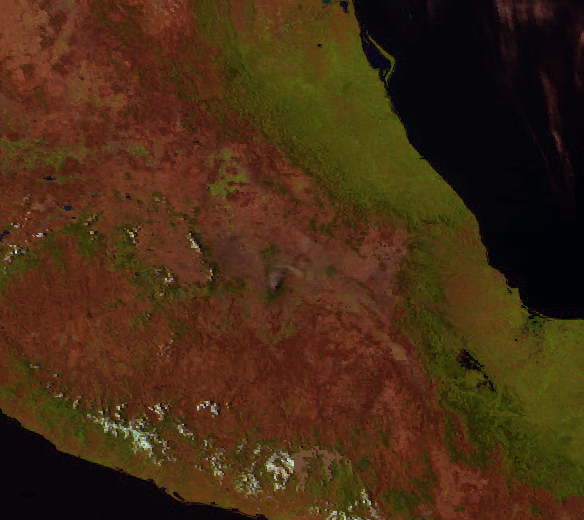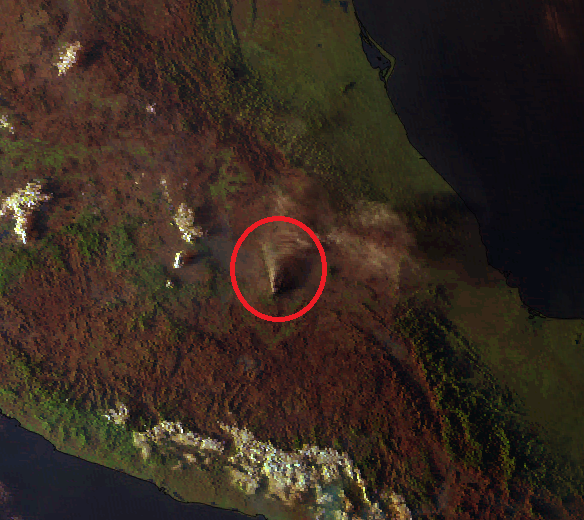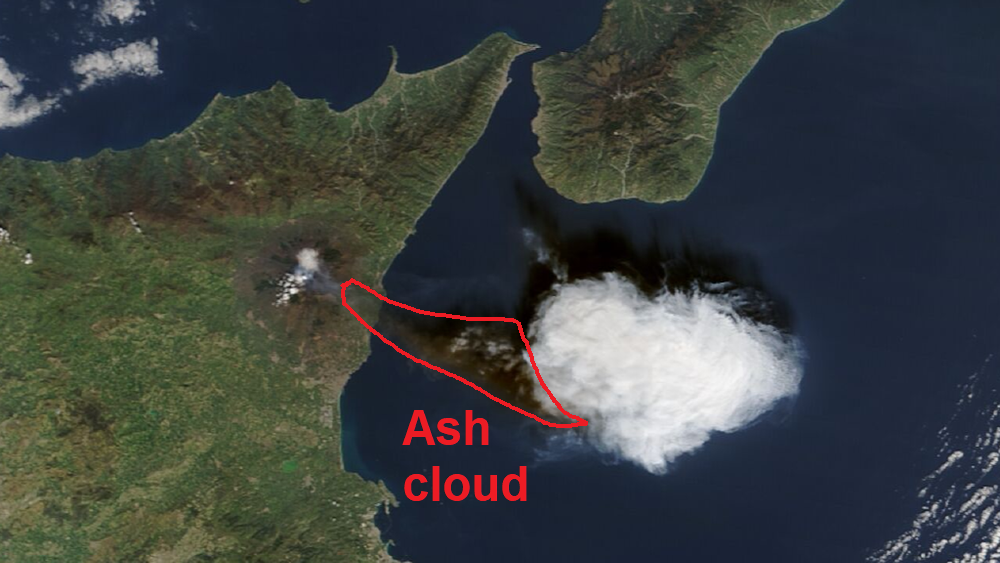2.3 Visible channel combinations for detecting ash and smoke clouds
Figure 17: Himawari-8 True Color RGB, Sinabung eruption on 19 February 2018 01:00 - 11:00 UTC
Visible channels are sensitive to small aerosol particles such as smoke, mineral dust and volcanic ash suspended in the atmosphere. The detection sensitivity of small aerosol particles increases with smaller wavelengths. For the SEVIRI instrument on geostationary MSG satellites, this sensitivity ends for particle sizes at around 25 µm. Below this threshold, suspended aerosols remain invisible for the scanning instrument. However, and in contrast to infrared channels, visible channels cannot depict trace gases that are constituents of volcanic plumes.
Visible channels have two main advantages when compared to infrared channels:
- They often have a better spatial resolution than infrared channels
- They can show low-level ash clouds better than infrared channels when the temperature contrast between cloud and ground is marginal
The Natural Color RGB
The Natural Color RGB combines two visible channels with a near-infrared channel. The advantage of using two visible channels is to include cloud optical thickness information into the RGB product to make thick volcanic ash plumes more visible in the Natural Color RGB (Figure 18). Generally, ash plumes are easier to distinguish over sea than over land because of the stronger contrast with dark surface water. Moreover, this RGB's ability to depict surface characteristics helps detect ash deposits on vegetation.
Additionally, the red color beam (NIR1.6), being sensitive to very hot surfaces, gives a clear signal if lava is present (hot spot, Figure 18). For the same reason, this channel is also used in the Fire Temperature RGB.
Figure 18: Suomi-NPP Natural Colour RGB, Mount Majon eruption on 22 January 2018 at 05:20 UTC.
The solar incidence angle has a considerable effect on ash plume visibility when using the Natural Color RGB. The ash plume is much more visible in the evening hours at low solar incidence angles (Figure 19). Moreover, the whole image gets a 3-dimensional character.
Mount Popocatépetl erupted in February 2024, spewing out an ash plume in a northerly direction. This ash plume is perfectly visible in dusk conditions (00:00 UTC), but barely noticeable three hours before.
|
|
Figure 19: GOES-West Natural Colour RGB, Mount Popocatépetl eruption on 27 and 28 February 2024 at 21:00 and 00:00 UTC respectively. Use the slider to see the difference.
The True Color RGB
The True Color RGB combines spectral bands in the red, green and blue segments of the solar spectrum. Compared to the Natural Color RGB, it uses spectral bands even deeper into the short-wave spectrum, enhancing its capabilities for detecting atmospheric aerosols such as ash clouds composed of very small particles.
The advantage True Color images have over Natural Color images is their similarity to how humans perceive a given view (Figure 20). Their downside is the loss of information provided by the NIR1.6 channel regarding cloud microphysical properties, such as discrimination between ice and water phases or particle size, and the loss of thermal information, such as hot lava spots.
Figure 20: MODIS/Terra True Color image, Grimsvötn eruption on 22 May 2011 at 05:15 UTC.
More about the Natural Color and True Color RGB:
- Quick Guide Natural Color RGB
- Quick Guide True Color RGB
- CAL module on the Natural Color RGB
Quiz
On 28 February 2021, an ash/SO2 plume is visible two hours after the start of the eruption of Mount Etna.
Mark the ash cloud visible in the True Color RGB.




